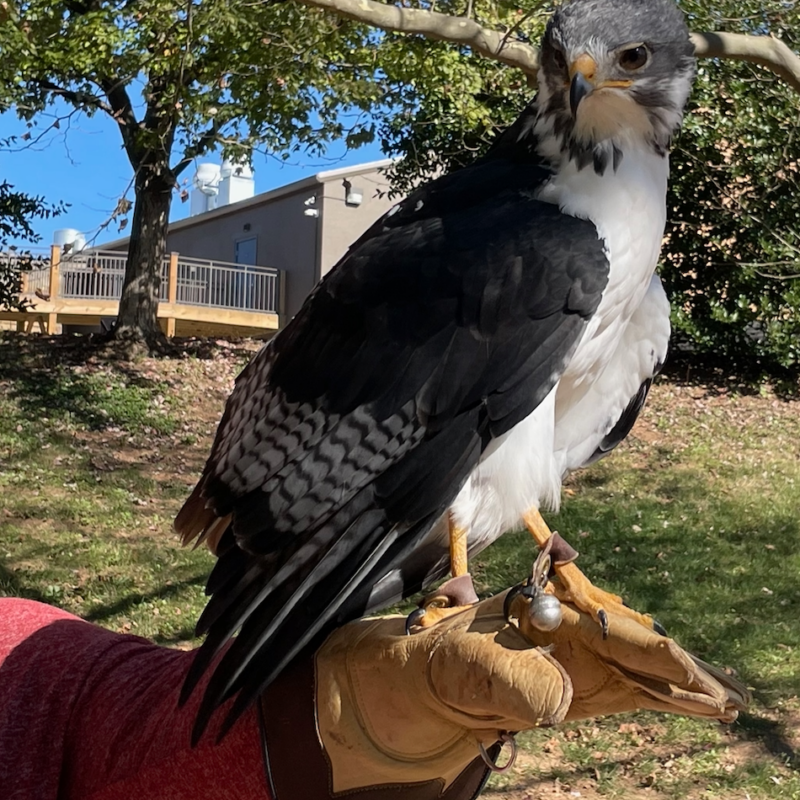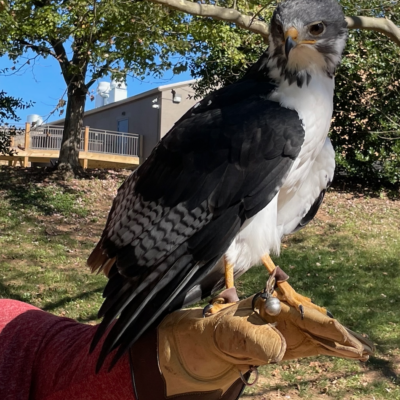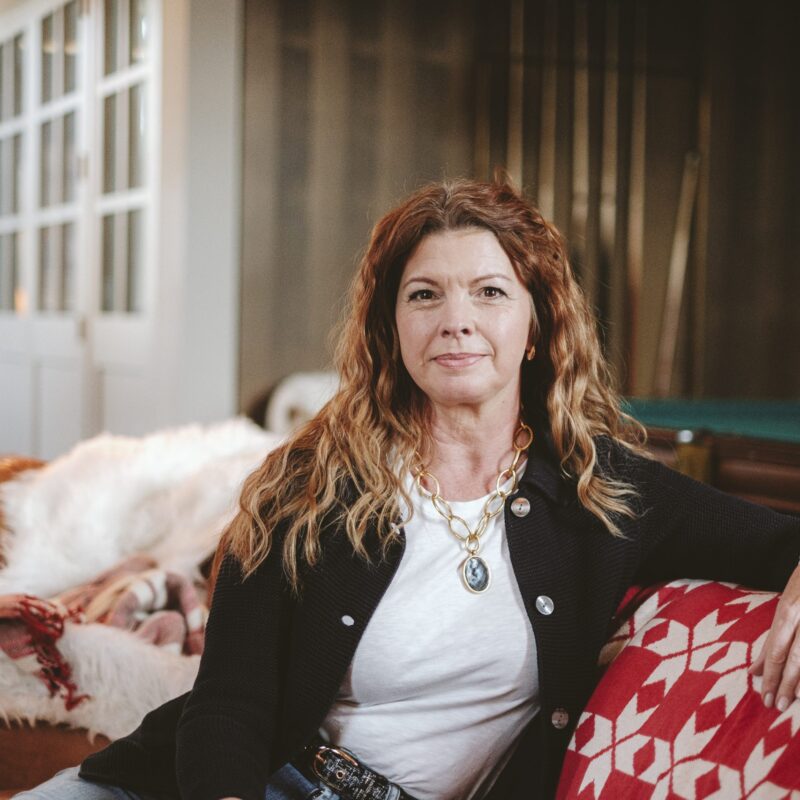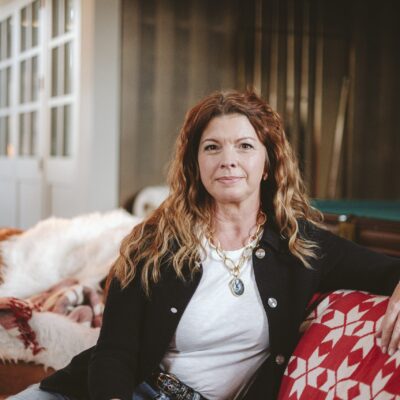Earlysville is one of those picture postcard examples of Central Virginia: Barrels of hay line the main drags through town, grazing cattle dot the rolling hills against a Blue Ridge backdrop and flocks of geese make pit stops in people’s front yards. It’s a place where many residents give directions like: “Take a right at the fork in the road and look for our gravel driveway 500 yards past the horse fence.” And it’s a place with a general store, a dentist office, a pizza shop.
Earlysville’s most notable landmark is the Union Church, an interdenominational meetinghouse built on land deeded by John Early (for whom the town is named) in 1833—it’s on the National Register of Historic Places. Townsfolk still gather in the electricity-free church for community events like the annual “Carol Sing” (enjoyed by oil lamp) each Christmas Eve. The landmark’s front steps are the site of the community vegetable share, where neighbors drop off their excess tomatoes and pick up whatever surplus produce bounty has been left by someone else.
Just where is this mythical Mayberry?
“I had friends I went to high school with who lived in Earlysville, and you would have thought it was the end of the world at that point—it was so far out,” says Kathy Woodson, a Charlottesville area resident since childhood and a homeowner in Earlysville for the past 21 years.
But that’s not the case anymore, she says. Developers have found sleepy Earlysville—and so have retirees from New York and New Jersey.
Woodson, a real estate agent with Real Estate III, says, “It’s amazing how many people have decided to come here rather than go all the way to Florida to retire. We get a lot of people who come from the states up North who find this not to be so expensive.”
Transplants are attracted by the mountain views and the acreage—most homes in the area, even in the subdivisions, are on at least an acre, she says. People fall in love with Earlysville, says Woodson, because it’s “very private.”
Native daughter
 Jodie Webber grew up in Earlysville and was shocked by the changes there when she returned in 1994. She’s shown here in one bastion of tradition: the historic Union Church, which still lacks electricity. |
It was the “long vistas over open fields” that brought Jodie Webber back to Earlysville where she was born and raised. Webber left home after studying architecture at UVA, and she lived in such far-flung places as Manhattan, Venice, Italy and Princeton, New Jersey, before she came back to her roots. “I really missed seeing mountains and open fields, open land,” says Webber, who returned to Earlysville in 1994 with her husband and two children (Webber’s third child is Earlysville-born). Webber and her husband (also an architect) built a home on a 29-acre section of Webber’s family farm adjacent to Broadus Wood Elementary. The home also serves as the office for the couple’s business, Koch & Webber Architects.
 Open land is part of what, ironically, is drawing residents and making Earlysville more dense. |
But Webber says Earlysville has “changed tremendously” since her childhood. As for her early experience with Earlysville, she says, “It was really nice how quiet it was back then, how you knew everybody and everyone looked out for everybody else. You didn’t lock your doors.” That was a time before Earlysville experienced a superfluence of subdivisions, and “that’s the one thing that I hate to see,” Webber says.
“When I was a kid there weren’t many housing developments,” she says. “There were houses and there were farms, fields and trees. It was very bucolic and pastoral, and it was lovely. There’s always a tradeoff, but I hate to see all the open space going.”
A land divided
Earlysville’s rural landscape of farms and one-off homes was first interrupted in the 1960s by the Earlysville Heights subdivision—a neighborhood of 55 modest brick ranch style homes. It wasn’t until the mid-1980s that the next major wave of residential progress hit Earlysville with the development of the Earlysville Forest subdivision. That neighborhood is Earlysville’s largest, with 191 homes, all on one to two acres. The houses are contemporary, country style with mature trees and natural landscaping that provides shade and privacy and keeps the larger homes from looking stark or ostentatious.
And then about 15 years ago, residential building began in earnest. That’s when developers came to take advantage of a mass of untouched farmland in the sweet spot south of D.C. and its proximity to the growing 29N commercial corridor and employment centers at the nearby Charlottesville office of GEFanuc and, in 1994, the UVA Research Park. Now, you’ll see several McMansion-type neighborhoods scattered among the fields and hay barrels.
 High-end housing, like this home in Claymont, is a big part of the intense residential growth around Earlysville. |
“Prices have gone way up and there are a lot of new neighborhoods,” says Woodson. “There used to be a time when if somebody wanted to look at houses under $400,000 you’d have plenty to show them. Now in Earlysville, you might have a few under $400,000. If you want to see up to $800,000, you have a lot more to look at,” she says. And Earlysville now has what Woodson calls the “farmette,”—new million dollar estate-type homes on 20-plus acres.
“These big homes, you think, ‘Wow’ but they seem to sell”—many to retirees looking to settle down in the country, says Woodson.
Country living for the masses
The irony is that development is bringing newcomers to Earlysville who themselves are trying to escape the crowds.
“People who have lived in other places that are bigger and more congested come here because they want to escape that, and they are very concerned about growth,” says Webber, who is vice president of the Earlysville Area Residents’ League. And despite the furious residential growth, Webber and Woodson both boast about Earlysville’s strong sense of community, which is centered, they say, around Broadus Wood Elementary (“ a neat little country school” says Woodson) and the preservation of provincial pastimes like the vegetable share and the annual Easter Egg Hunt, Fourth of July Parade and Carol Sing.
 Complete with general store, Earlysville is a rural village facing modern pressures. |
The newcomers are coming precisely for this modern-day Mayberry, and so there’s hope that the essence of Earlysville will be protected in some way. As for the natives, Webber says, “I think a lot of people who have been here have been lulled into false complacency regarding development. Because there was always so much open space they figured, ‘There’s room for everybody; it doesn’t matter.’ I think, only fairly recently, more and more people have come to realize that if you don’t control it, you will wake and find it’s become like Northern Virginia, and it will go past the point of no return.”
At a glance
Distance (from town center) to Downtown Mall: 13 miles
Distance (from town center) to UVA Hospital: 12.5 miles
Elementary School: Broadus Wood
Middle School: Jack Jouett
High School: Albemarle
Price range of homes currently on market: $234,900-$2.5 million
Median price of homes on market: $669,000
Median price of land on market: $300,000 for 5.8 acres
Source: Charlottesville Area Association of Realtors





